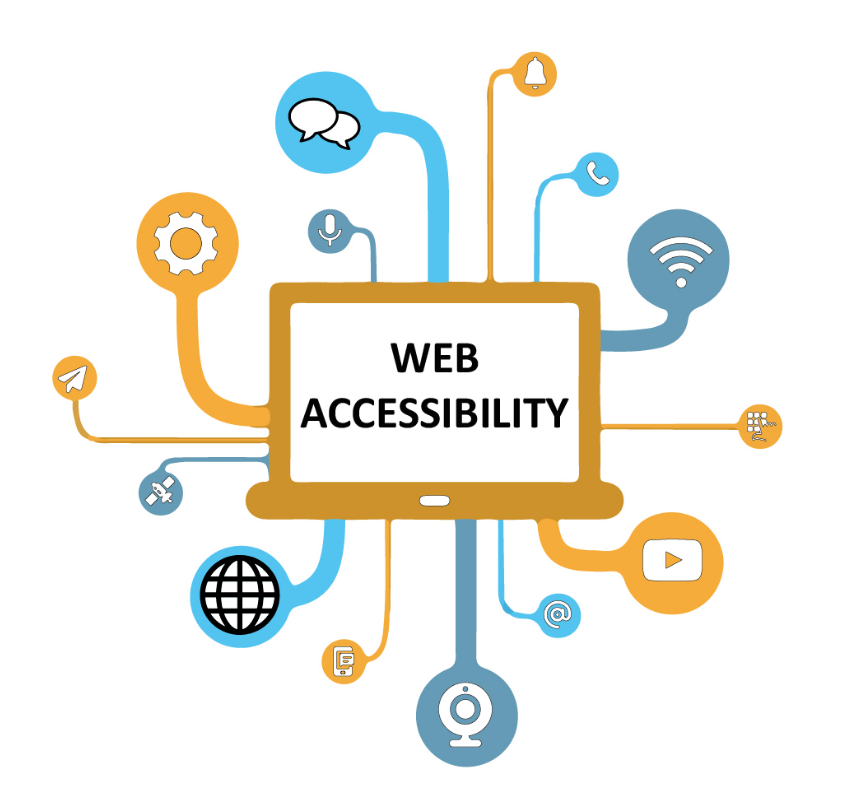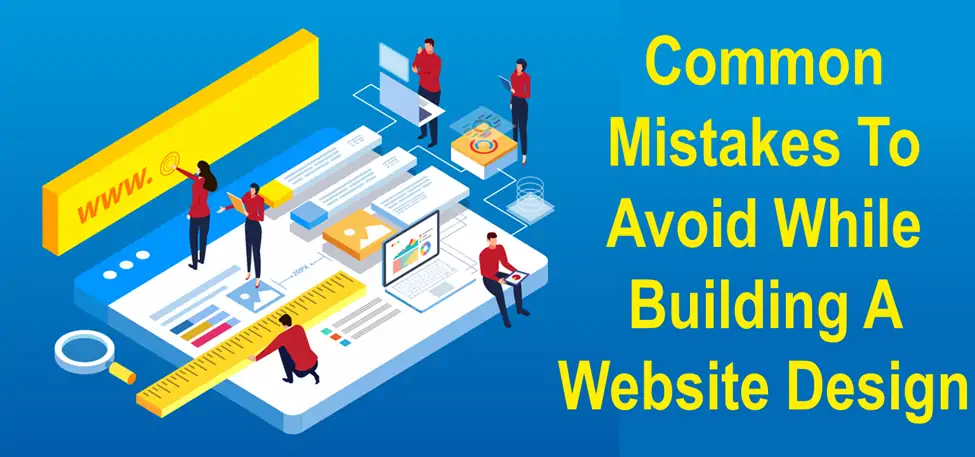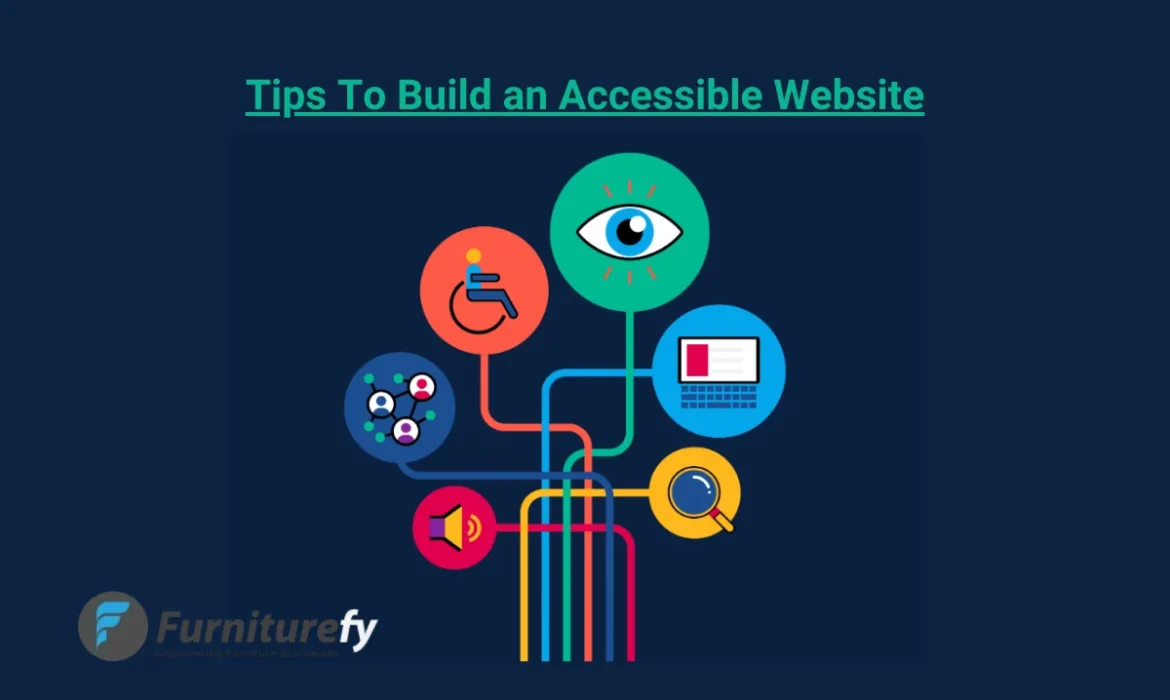Tips To Build an Accessible Website
Creating an accessible website is essential for ensuring that all users, regardless of their abilities, can access and navigate your content effectively. Moreover, accessibility and search engine optimization (SEO) often go hand-in-hand, as many accessibility best practices also enhance your website’s visibility in search engines.
In this guide, we will explore key strategies to build an accessible, SEO-optimized website.
Understanding Accessibility
Web accessibility means designing websites that can be used by people with disabilities, including those who rely on assistive technologies like screen readers. The Web Content Accessibility Guidelines (WCAG) provide a comprehensive framework for creating accessible content.

Importance of Accessibility
- Wider Audience: By making your website accessible, you reach a larger audience, including individuals with disabilities.
- Legal Compliance: Many countries have laws requiring web accessibility.
- Improved SEO: Accessible websites often rank better in search results due to clearer structure and improved user experience.
Key Tips for Building an Accessible Website
To build an accessible website, use semantic HTML, provide text alternatives for non-text content, ensure keyboard navigation, use descriptive link text, optimize color contrast, implement ARIA when needed, create responsive designs, and regularly test with assistive technologies. These practices enhance usability for all users, including those with disabilities.

1. Use Semantic HTML
Semantic HTML uses elements for their intended purpose, which helps screen readers understand the structure and meaning of the content. For instance:
- Use <header>, <footer>, <article>, and <nav> tags to define sections of your webpage.
- Use <h1> to <h6> for headings to create a clear hierarchy.
2. Provide Text Alternatives for Non-Text Content
Every non-text element should have a text alternative:
- Images: Use alt attributes that describe the image content.
- Videos: Provide captions and transcripts for all video content.
- Audio: Include transcripts for audio files.
3. Ensure Keyboard Navigation
Not all users can use a mouse. Ensure that all interactive elements, such as forms, buttons, and links, are accessible via keyboard navigation. Use the tab key to navigate through elements and ensure focus indicators are visible. Avoid vague phrases like “click here.” Instead, use descriptive text that indicates where the link will take the user. For example, “Read our accessibility policy” is clearer than “Click here.”
5. Implement ARIA (Accessible Rich Internet Applications)
ARIA attributes can enhance accessibility for dynamic content. For example, use role attributes to define specific roles for elements, such as role=”alert for error messages. However, use ARIA only when necessary, as semantic HTML should be prioritized. Ensure that text contrasts sufficiently with background colors to improve readability. The WCAG recommends a contrast ratio of at least 4.5:1 for normal text and 3:1 for large text.
7. Create Responsive and Mobile-Friendly Designs
Responsive designs that adapt to different screen sizes benefit all users, including those using screen magnification tools. Test your website on various devices to ensure it remains usable and accessible.
8. Test with Assistive Technologies
Regularly test your website using screen readers (like JAWS or NVDA) and keyboard-only navigation to identify accessibility issues. Gather feedback from users with disabilities to improve the user experience.
SEO Best Practices
1. Optimize Page Titles and Meta Descriptions
Craft unique and descriptive page titles and meta descriptions for every page. Include relevant keywords, but ensure they remain clear and informative. Use header tags to create a clear structure for your content. This not only aids accessibility but also helps search engines understand the hierarchy and relevance of your content.

3. Optimize Images
In addition to usin alt tags, optimize images for fast loading times. Compress images and use appropriate file formats (like JPEG or PNG). Use descriptive filenames that include relevant keywords. A fast-loading website enhances user experience and is favored by search engines. Use tools like Google PageSpeed Insights to identify areas for improvement.
5. Create Quality Content
High-quality, informative content attracts users and earns backlinks, both of which improve SEO. Focus on providing value, using keywords naturally without keyword stuffing. Google uses mobile-first indexing, meaning it prioritizes mobile versions of sites for ranking. Ensure your site is responsive and provides a seamless experience on all devices.
Mistakes to Avoid When Building an Accessible Website
When building an accessible website, avoid common mistakes such as neglecting alt text for images, which prevents screen readers from conveying important information. Using vague link text like “click here” can confuse users; instead, be descriptive. Ensure your site is not solely mouse-dependent, allowing keyboard navigation for all interactive elements. Avoid low color contrast, as it makes text difficult to read.

Additionally, don’t ignore mobile responsiveness; a non-responsive site can alienate users on various devices. Lastly, skipping testing with real users who have disabilities can lead to oversights, so prioritize user feedback to enhance accessibility effectively.
Conclusion
Building an accessible website not only benefits users with disabilities but also enhances your SEO efforts, creating a better experience for all users. By implementing the tips outlined in this guide, you can ensure that your website is welcoming, functional, and optimized for search engines. Accessibility is an ongoing process, and regularly revisiting your site’s design and content will help maintain and improve its accessibility over time.
Read more : Why SEO-Friendly Web Development is a Must
FAQs
Web accessibility is the practice of designing websites that can be used by all individuals, including those with disabilities, ensuring they can perceive, understand, navigate, and interact with the web.
Many accessibility practices, such as using semantic HTML and providing alt text for images, improve user experience and help search engines better understand your content, leading to improved rankings.
You can use tools like WAVE, Axe, or Google Lighthouse to identify accessibility issues. Additionally, testing with real users who have disabilities provides invaluable feedback.
The Web Content Accessibility Guidelines (WCAG) are a set of international guidelines designed to make web content more accessible to people with disabilities. They provide specific criteria to meet different levels of accessibility.
Yes, many accessibility improvements can be made by following best practices. However, consulting with accessibility experts or agencies can provide more comprehensive solutions, especially for complex websites.

Alex Mitch
Welcome to my blog! With over 10 years in digital marketing, I’ve seen its incredible impact on smaller businesses. Join me as we explore how digital marketing can grow your audience and boost your business. Whether you’re an experienced entrepreneur or just starting out, you’ll find practical tips and insights to enhance your digital marketing strategies.





